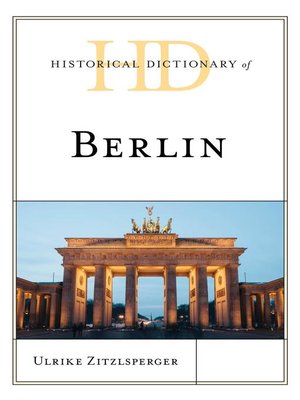Historical Dictionary of Berlin
ebook ∣ Historical Dictionaries of Cities, States, and Regions
By Ulrike Zitzlsperger

Sign up to save your library
With an OverDrive account, you can save your favorite libraries for at-a-glance information about availability. Find out more about OverDrive accounts.
Find this title in Libby, the library reading app by OverDrive.



Search for a digital library with this title
Title found at these libraries:
| Library Name | Distance |
|---|---|
| Loading... |
After World War II Berlin became one of the playgrounds of the Cold War; the Berlin Wall made the division between East and West, between 'capitalism' and 'communism' in 1961 highly visible, though it did remove Berlin from front-line politics. East and West Berlin had turned into shop-windows of ideologies – West Berlin representing the lure of a market economy, East Berlin the promise of socialism. It is, then, fitting that the fall of the Wall in 1989 awarded Berlin such a prominent role. It was here that the development after Reunification of East and West became a closely observed event – and, well beyond Germany, Berlin appeared to represent fundamental developments throughout Europe at the time. Today, Berlin is the capital of reunified Germany and therefore one of the key political players in the European Union (EU) and it's now a desirable destination for young entrepreneurs.
The Historical Dictionary of Berlin contains a chronology, an introduction, and an extensive bibliography. The dictionary section has more than 300 cross-referenced entries on important personalities, places, institutions, and events. This book is an excellent resource for students, researchers, and anyone wanting to know more about Berlin.
The Historical Dictionary of Berlin contains a chronology, an introduction, and an extensive bibliography. The dictionary section has more than 300 cross-referenced entries on important personalities, places, institutions, and events. This book is an excellent resource for students, researchers, and anyone wanting to know more about Berlin.







